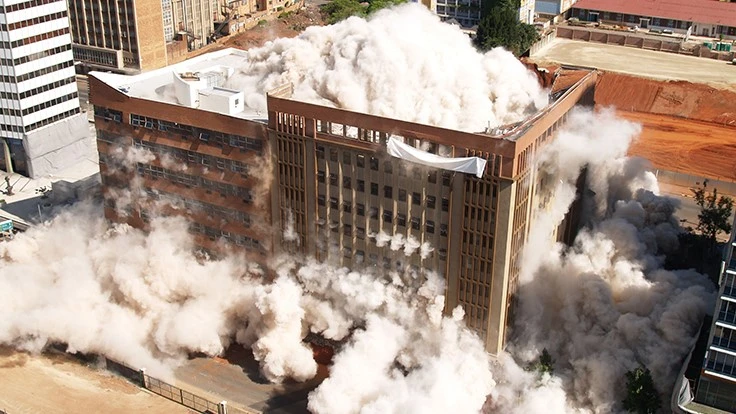
A new group in Pittsburgh is taking action to reduce children’s exposure to lead in the region through demolition activity.
The Lead-Safe Demolition Working Group, formed by the Institute of Politics at the University of Pittsburgh, recently proposed an ordinance with instructions on best demolition practices to reduce lead exposure, including wetting down a structure before, during and after demolition to control dust spreading, according to the Post-Gazette.
Lead exposure is linked, in part, to dust produced by demolition activity. Exposure in children causes irreversible brain damage that can result in a variety of issues, including lower IQ, hearing problems, behavior and learning problems, slowed growth and more.
The recommendations come from a report the group developed by researching best practices in successful cities with similar ordinances, such as East Baltimore, Maryland; Portland, Oregon; and Detroit. In each city, protective measures have been found to reduce dust spreading during demolition.
Post-Gazette reports that each city has clear rules on what needs to be done before, during and after demolition. East Baltimore’s ordinance is considered the most strict, the publication reports, adding an estimated 25 percent to demolition costs.
As part of the group’s research, it found that a significant amount of lead can be dispersed within a 400-foot area during demolition. Fallout from the demolition of single-family homes in Chicago resulted in “a 17-fold increase in dust, a 31-fold increase in lead dust, and 109 percent increase in lead at demolition sites.”
Another study conducted in Baltimore assessed the ambient dust lead levels associated with demolitions of blocks of older lead-containing row houses. The study found that daily lead dust fall during demolition exceeded the U.S. EPA floor standard by six-fold on average and as much as 81-fold on an individual sample basis.
The group’s proposed ordinance includes, along with wetting down the structure, communication with the public to let them know the demolition is happening and careful cleanup and ground cover once it’s done.
A member of the working group is watching over the demolition pilot project to test the ordinance’s effectiveness. The monitoring will include testing paint and soil, measuring wind speeds on demolition days and access to water during the demolition.
The group also proposed several funding methods on the local, state and federal level and is continuing to assess how to finalize funding.
Latest from Construction & Demolition Recycling
- Pacific Steel selects Danieli as EAF equipment supplier
- Viably, Turmec partner on Ohio installation
- EPA plans to revisit numerous environmental, climate regulations
- Fornnax wins Green Innovation of the Year award
- ABC: Construction backlog inches lower, staffing levels expected to grow
- Former detention center in Cleveland set for demolition
- Ferrous market upward price momentum continues into March
- Build Reuse joins up for Circularity event





